Flooding Project Resources:

Scientists expect even greater risk of flooding in the future. Climate change has led to rising sea levels and heavier rainfall and development continues along coastlines, exposing more people and property to flood risk. More than 300,000 coastal homes could be regularly flooded by high tides in the next 30 years.

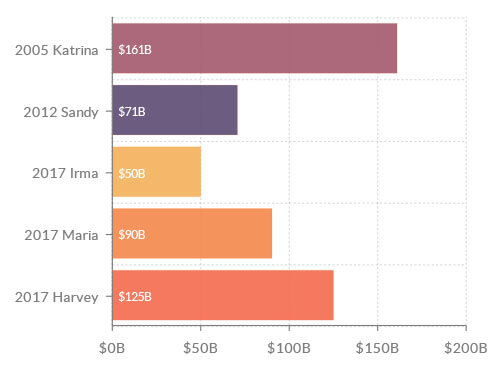
Top 5 Costliest Hurricanes on Record
Source: National Oceanic and Atmospheric Administration
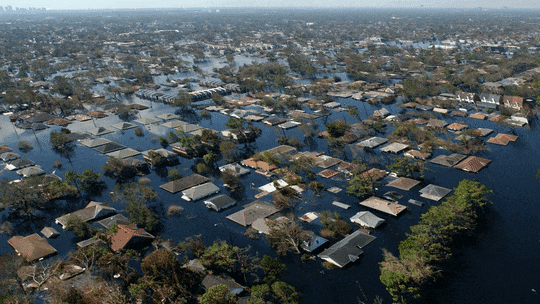
The Eastern seaboard and gulf coasts are the most threatened by flooding.
The areas most threatened by flooding are on the eastern seaboard and gulf coasts. At the same time, shifts in Pacific Ocean currents are likely to increase flood risks on the west coast. And the Great Lakes are seeing more heavy rain events, resulting in more flooding.
Many coastal cities sit on flat, low-lying land, making them vulnerable to rising waters. In some places, tidal marshes and creeks were filled in many years ago to create new land. These low areas are likely to flood first.
Coastal erosion is a natural process, but human actions have sped up the process. The continuing erosion of beaches and wetlands makes our coasts more vulnerable to flooding.
Storm surge from hurricanes and other storms can cause catastrophic flooding. High tide flooding is also more frequent. Heavy rainfall can rapidly cause coastal rivers to overtop their banks as they flow toward bays and estuaries. Together or separately, these coastal floods may close low-lying roads, inundate basements and structures, wash homes away, and cause other damage.


Wetland areas such as salt marshes, mangrove forests, oyster reefs, and sea grass beds are vital to protection against flood waters. Coastal ecosystems such as wetlands act as buffers from storm surge. Preservation and restoration of these habitats is an important part of coastal resiliency. However, over the last 200 years about half of U.S. wetlands have been lost. By breaking powerful wave energy before it reaches the shoreline, oyster reefs play an important role in reducing shoreline erosion. Living shorelines reduce flooding by absorbing wave energy.
One study found that Hurricane Irene damaged 76% of
bulkheads surveyed, while it did not damage marshes.
Sand dunes with healthy plants also provide protection from flooding. They absorb the impact of storm surge and high waves, and they store sand to rebuild eroded beaches.
Restoration of marshes and oyster reefs is among the most cost-effective solutions to reduce flood risk on the Gulf Coast. One study found that wetland and reef restoration can provide more than $7 in flood-reduction benefits for every $1 spent on restoration.
Another study found that retaining coastal wetlands along the New Jersey shoreline saved more than $625 million in Hurricane Sandy-related property damages. Coastal wetlands provide an estimated $23 billion in hurricane protection.
Other scientists suggest that coastal resiliency can be improved with wide swathes of salt marshes or mangroves backed by engineered levees. The natural structure breaks up wave energy, while the levee defends against higher waves.
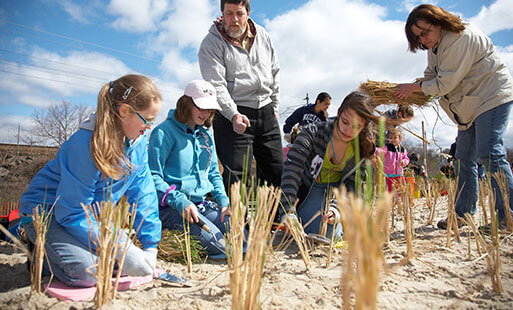
Kids planting grass for coastal restoration project
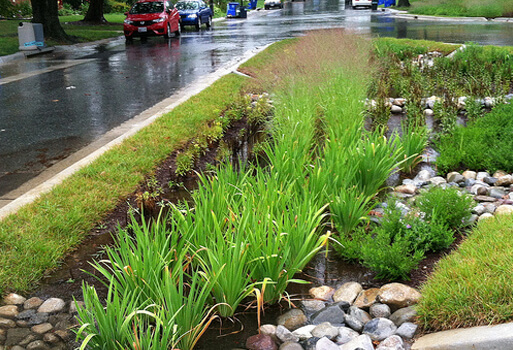
Neighborhood rain gardens capture and filter stormwater and slow the rate of runoff.
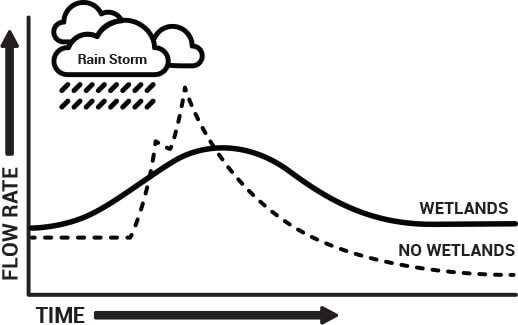
More Wetlands Mean Less Flooding. Wetlands reduce peak stormwater flows. Protecting and restoring wetlands can reduce the destructive potential of flooding.
Data Source: U.S. Environmental Protection Agency – Wetlands: Protecting Life and Property from Flooding.
We need your help to improve the Toolkit by completing our easy, 3-minute survey. Your insight is valuable to us.